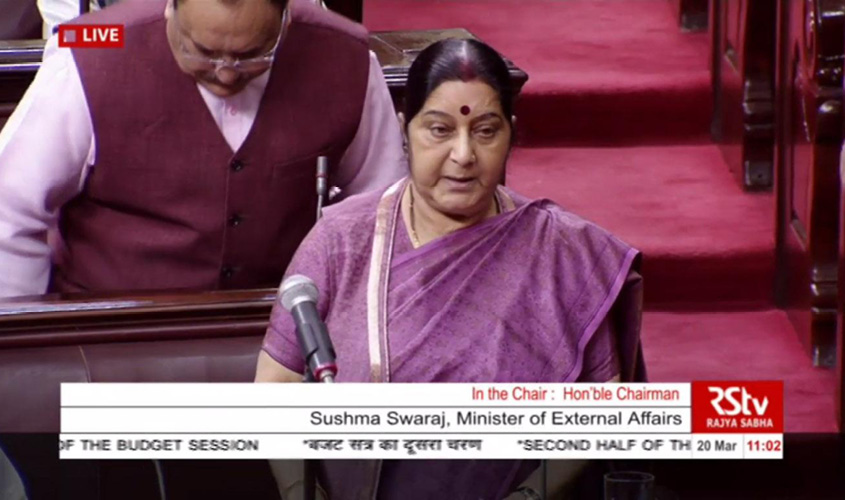A report recently released by NITI Aayog, titled “Transformation of Aspirational Districts”, has placed Madhya Pradesh’s Vidisha district, which is represented for the last two terms by External Affairs Minister Sushma Swaraj, at the 98th position in terms of health and nutrition. The report evaluated the country’s 101 most backward districts that have shown low progress in achieving social outcomes in terms of human development indices. The parameters focus on 13 indicators, including antenatal care, postnatal care, gender parity, health of newborns, growth of children, contagious diseases and health infrastructure. This initiative was launched by Prime Minister Narendra Modi in January with the intention to identify and focus on the most backward districts of the country in an attempt to bring them to the level of the country’s developed districts. The districts are judged on the basis of 49 parameters devised by experts in NITI Aayog. Among these 101 districts, Vidisha is at the 42nd position in the overall ranking.
Sushma Swaraj, who won the 2014 elections by more than 4 lakh votes from Vidisha, which adjoins Bhopal, and is likely to become a part of “Greater Bhopal” similar to Delhi-NCR, in the coming years, has rarely visited Vidisha after winning from the seat, allege local residents.
This high-profile seat was earlier represented by former Prime Minister Atal Behari Vajpayee and then by Chief Minister Shivraj Singh Chouhan, who was elected five times from Vidisha. Swaraj, who went to Bhopal last Monday, after the report was released, again chose to give Vidisha a miss, something which she has been doing for the last two years, say residents, apparently because of her ministerial duties.
In Bhopal, Swaraj, while speaking on Vidisha’s poor ranking said that because of “poor monitoring many people failed to avail the benefits of welfare schemes
Bhopal based BJP leaders told this newspaper that resentment was growing among the people of Vidisha as their MP was not visiting them. “Vidisha is a BJP bastion, but that does not mean that voters will not notice that their MP hardly visits them. In the 2014 elections, even though we won, our vote percentage went down by a massive 12%. If it was not for the Narendra Modi wave, we would have faced a challenge from the Congress in Vidisha. The fact that she has not been able to nurture her constituency has led to speculation that she might not contest from Vidisha again,” a party leader said.
According to Vidisha residents, the fact that despite being represented by such a high-profile minister, Vidisha was being counted among the most backward districts of the country, tell a story of neglect. “We are right next to Bhopal yet the difference is stark with even basic amenities missing in many areas. There are a couple of representatives who are supposed to act on behalf of Swaraj here, but they rarely come to Vidisha. Instead they sit in Bhopal in an inaccessible environment. How do we take our message to our MP? She is perceived as the ‘missing MP’,” said a Vidisha based hotel owner.
The list has 19 districts from Jharkhand, 13 from Bihar, 10 from Chhattisgarh and eight each from Uttar Pradesh and Madhya Pradesh. MP also has the worst performing district of Singrauli when it comes to education.

